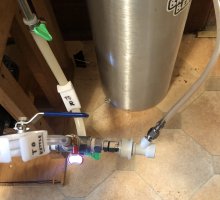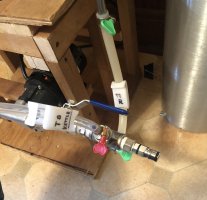Hey everyone, I'm ready to give LODO a try and are looking for some advice from Grainfather users who do LODO already.
I've already made some mods to my Grainfather. I've removed the overflow pipe as it splashes wort and restricted the pump flow to a minimum level, plus added a BIAB bag for cleaner wort. Have done a few successful regular brews like this.
My cold side is in good shape already, I've been fermenting in cornies for some time but just scored a stainless pressure conical in a comp so that was nice
So I'm looking at the following further changes. Are there any GF users out there doing LODO that would like to comment on this?
I've already made some mods to my Grainfather. I've removed the overflow pipe as it splashes wort and restricted the pump flow to a minimum level, plus added a BIAB bag for cleaner wort. Have done a few successful regular brews like this.
My cold side is in good shape already, I've been fermenting in cornies for some time but just scored a stainless pressure conical in a comp so that was nice

So I'm looking at the following further changes. Are there any GF users out there doing LODO that would like to comment on this?
- No sparge - probably need to scale the recipe down a bit, fine
- Fill the malt pipe with grain and slowly lower into the (preboiled+SMB) water
- Recirculate normally with the hose under the water line and a mash cap on top
- To drain the grain, lift the malt pipe with a pulley keeping it level at the wort line
- I've ordered a stainless IC to replace the copper counterflow. Plan to gently recirculate while chilling to keep wort moving over the chiller (otherwise it takes forever)
- I have my own mill but have found I lose a solid 10-15 points efficiency by conditioning the grain, so now I just do a fine BIAB crush with slow recirculation and have no issues with stuck mash. Is conditioning an essential part of the process? I worry that losing efficiency from no-sparge + not stirring + shorter mash time + conditioning grain could put me below 50%.











![Craft A Brew - Safale S-04 Dry Yeast - Fermentis - English Ale Dry Yeast - For English and American Ales and Hard Apple Ciders - Ingredients for Home Brewing - Beer Making Supplies - [1 Pack]](https://m.media-amazon.com/images/I/41fVGNh6JfL._SL500_.jpg)


















































